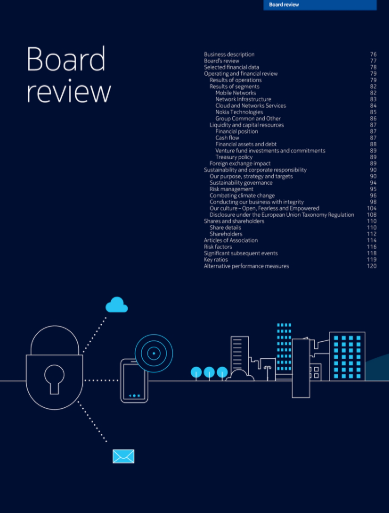Managing currency exposure in today’s global financial markets requires digesting an immense amount of macroeconomic information. However, systematically integrating this data into trading strategies remains a challenge. A promising approach lies in using macro-quantamental scorecards—structured tools that distill key economic indicators into clear, actionable signals for currency management.
These scorecards offer a condensed yet dynamic picture of macroeconomic forces shaping FX returns. By translating complex data into normalized scores, traders and analysts can more effectively monitor global developments, identify trading opportunities, and test strategies with empirical rigor.
What Are Macro-Quantamental Scorecards?
At their core, macro-quantamental scorecards are structured summaries of point-in-time macroeconomic data that aim to predict returns in financial contracts like FX forwards. They operate as a systematic overlay for discretionary strategies or as a foundation for purely rule-based trading.
Each scorecard builds on three nested layers:
- Macro scores: Individual indicators, such as GDP growth or inflation, are measured relative to theoretical norms or peer countries.
- Conceptual scores: These group similar indicators (e.g., labor market or consumer confidence) into broader economic themes.
- Thematic scores: High-level composites, such as economic activity or price competitiveness, which guide strategic positioning.
This hierarchical structure ensures flexibility—enabling both a bird’s-eye view and deep dives into specific economic drivers.
Applying Scorecards to Global FX Markets
The FX space is especially suited for this kind of macro-based analysis. It offers access to nearly 30 liquid currencies, including both developed and emerging markets. Systematic scorecards allow these currencies to be assessed and compared on a common macro framework.
Currencies are grouped by their base pairings—usually against the dollar or euro. Illiquid pairs or pegged currencies are filtered out, ensuring the analysis focuses on freely traded instruments.
An example scorecard incorporates four major thematic categories:
- Economic Activity – Growth differentials, industrial output, labor markets, and consumer demand.
- Monetary Policy – Inflation gaps, credit expansion, interest rate spreads, and liquidity dynamics.
- External Balances & Valuation – Current accounts, external liabilities, and currency valuation.
- Price Competitiveness – Producer price trends and terms-of-trade improvements.
Each of these themes comprises multiple conceptual factors, which in turn draw from specific indicators. Together, they offer a balanced and theory-informed view of each currency’s macro stance.
Real-Time Insights and Historical Context
Scorecards aren’t just about snapshots. They also offer historical perspective—tracking how scores evolve over time and how macro themes gain or lose relevance.
Composite scores, formed by equally weighting thematic scores, act as a baseline for currency positioning. While macro isn’t the only consideration in trading, these composites provide a rational and consistent guide. They can also expose gaps between market sentiment and economic fundamentals.
Using Python and tools like Macrosynergy’s open-source library, users can visualize current score snapshots, track long-term trends, and implement simple systematic overlays with minimal coding.
Testing Predictive Power
The real test of any scorecard is whether it adds value. Because these scores are calculated using only contemporaneous data, their predictive strength can be statistically validated.
Empirical studies confirm that macro-quantamental themes consistently forecast FX forward returns across monthly, weekly, and quarterly horizons. Importantly, the combination of multiple themes into a composite score amplifies predictive accuracy—outperforming any single theme alone.
Backtests using basic trading rules—such as going long currencies with high composite scores—show strong and stable results. A naïve monthly strategy with volatility targeting yields solid Sharpe and Sortino ratios over long periods, even without optimization or risk overlays.
Adapting to Shifting Market Focus
Market narratives change. A scorecard structure that adapts to prevailing concerns—be it inflation, external debt, or policy tightening—helps traders stay relevant.
For example, when funding risks dominate headlines, scorecards can emphasize external balances and liabilities. This makes it easier to assess which currencies are most vulnerable and to preempt market shifts before they’re priced in.
Historical comparisons also add context. A currency that looks risky today may still be stronger than during prior stress periods—offering better perspective than isolated numbers.
Country-Specific Views
Beyond global trends, scorecards can zoom in on individual currencies. National scorecards track all themes and concepts relevant to a single economy, providing a clear narrative of its macro position.
Take the Chilean peso, for instance. Its current macro backdrop is moderately favorable, driven by strong terms of trade and external balance support—insights that can validate or challenge existing trading views.
A Framework, Not a Formula
What sets macro-quantamental scorecards apart is their blend of structure and flexibility. While this example follows one specific framework, users can adjust weights, factor definitions, and indicator selections based on institutional preferences or research convictions.
The goal isn’t to prescribe a perfect model, but to provide a clear and customizable lens through which macro forces can inform FX strategy—empirically, transparently, and consistently.
Conclusion
Macro-quantamental scorecards are a powerful way to bridge the gap between economic theory and real-world trading. By structuring and validating macro insights systematically, they help currency managers cut through the noise, align positions with fundamentals, and build more robust strategies in volatile global markets.
